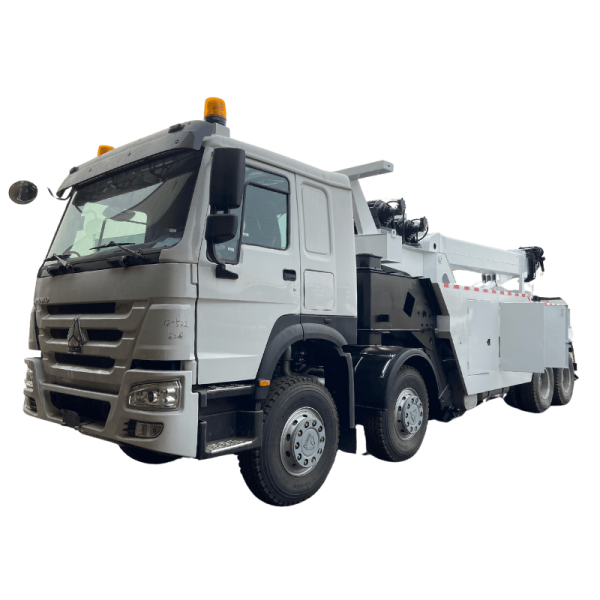Introduction
Garbage compactor trucks play a crucial role in waste management operations by collecting and compacting waste materials for transportation to disposal sites. These specialized vehicles come in various sizes and configurations, each with unique features designed to enhance efficiency and productivity. In this article, we will compare and analyze the key features of different types of garbage compactor trucks to help waste management professionals make informed decisions when selecting the most suitable vehicle for their operations.
Types of Garbage Compactor Trucks
Before delving into the comparative analysis of garbage compactor truck features, it is essential to understand the different types of compactor trucks available in the market. The two main categories of garbage compactor trucks are rear loader compactor trucks and side loader compactor trucks. Rear loader compactor trucks are equipped with a compactor mechanism at the rear of the vehicle, while side loader compactor trucks have the compactor mechanism mounted on the side of the truck.
Both types of compactor trucks have their advantages and limitations, and the choice between them depends on various factors such as the type of waste being collected, operational requirements, and available infrastructure. In this article, we will focus on comparing the features of rear loader compactor trucks, as they are the most commonly used type of compactor trucks in municipal waste management operations.
Comparative Analysis of Garbage Compactor Truck Features
1. Garbage Compactor Truck operator training and Compaction Ratio
One of the key features to consider when comparing garbage compactor trucks is their capacity and compaction ratio. The capacity of a compactor truck refers to the volume of waste it can hold before requiring unloading, while the compaction ratio indicates the extent to which the waste is compressed and compacted inside the truck.
Higher capacity and compaction ratio are desirable features as they allow for more efficient waste collection and transportation, reducing the frequency of trips to disposal sites and overall operational costs. When comparing different compactor trucks, it is essential to consider the maximum payload capacity, compaction force, and compaction ratio to determine the most suitable vehicle for the intended waste management operations.
2. Loading Mechanism
Another critical feature to compare in garbage compactor trucks is the loading mechanism. The loading mechanism determines how waste is collected and compacted inside the truck, affecting the efficiency and speed of the collection process.
Common loading mechanisms in rear loader compactor trucks include hydraulic lifters, automated arms, and manual loading systems. Hydraulic lifters are used to lift and empty dumpsters into the compactor, while automated arms can pick up and empty bins without manual intervention. Manual loading systems require operators to manually load waste into the compactor, which can be labor-intensive and time-consuming.
When comparing garbage compactor trucks based on their loading mechanisms, it is essential to consider factors such as speed, ease of operation, and maintenance requirements to select the most suitable vehicle for the specific waste management needs.
3. Safety Features
Safety is a paramount consideration in waste management operations, and garbage compactor trucks are equipped with various safety features to protect operators and the public during collection and compaction activities.
Common safety features in garbage compactor trucks include backup cameras, proximity sensors, emergency stop buttons, and audible alarms. Backup cameras help operators navigate tight spaces and avoid accidents, while proximity sensors alert the driver to obstacles in the vehicle's path. Emergency stop buttons allow operators to halt compaction activities in case of emergencies, while audible alarms warn pedestrians and other vehicles of the truck's presence.
When comparing garbage compactor trucks based on their safety features, it is essential to prioritize vehicles with robust safety systems to reduce the risk of accidents and injuries during waste collection and transportation operations.
4. Fuel Efficiency and Environmental Impact
Fuel efficiency and environmental impact are increasingly important considerations in waste management operations, as organizations seek to reduce operating costs and minimize their carbon footprint. Garbage compactor trucks are available in various fuel types, including diesel, compressed natural gas (CNG), and electric powertrains.
When comparing garbage compactor trucks based on fuel efficiency and environmental impact, it is essential to consider factors such as fuel consumption, emissions levels, and operating costs. Diesel-powered compactor trucks are known for their high torque and long-range capabilities but produce higher emissions compared to CNG or electric-powered vehicles. CNG-powered compactor trucks offer lower emissions and operating costs but may have limited availability of refueling stations. Electric-powered compactor trucks are environmentally friendly and cost-effective to operate but may have limited range and longer recharging times.
5. Maintenance and Serviceability

Garbage compactor trucks are complex vehicles that require regular maintenance and servicing to ensure optimal performance and longevity. When comparing compactor trucks based on their maintenance and serviceability features, it is essential to consider factors such as ease of access to components, availability of spare parts, and service network coverage.
Vehicles with easily accessible components and well-documented maintenance procedures are easier and more cost-effective to service, reducing downtime and operational disruptions. Additionally, compactor trucks with a comprehensive service network and readily available spare parts ensure timely repairs and maintenance, prolonging the vehicle's lifespan and reducing overall operating costs.
Conclusion
Garbage compactor trucks are essential tools in waste management operations, and selecting the right vehicle with the most suitable features is critical to ensuring efficient and sustainable waste collection and transportation processes. By comparing and analyzing key features such as capacity and compaction ratio, loading mechanisms, safety features, fuel efficiency and environmental impact, and maintenance and serviceability, waste management professionals can make informed decisions when choosing the most appropriate compactor truck for their operations.
In conclusion, a comprehensive understanding of garbage compactor truck features and a careful evaluation of their capabilities are essential for optimizing waste management operations and achieving sustainable environmental outcomes. By considering the factors discussed in this article, organizations can select the most suitable compactor truck that meets their operational needs while enhancing efficiency, safety, and environmental responsibility in waste management practices.
